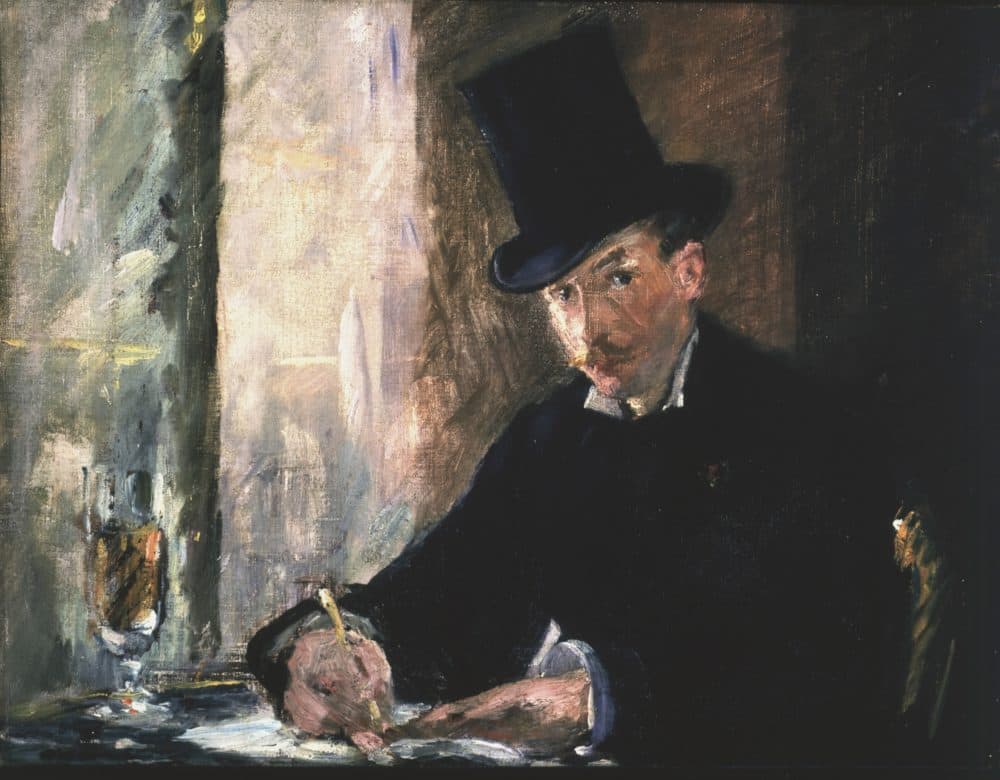Advertisement
< Back To Missing Art
‘Chez Tortoni,’ By Édouard Manet

Around 1875
A dapper mustachioed young man wearing a top hat is sitting in a café, next to a sunlit window. He’s writing something. At least one of his eyes is focused on us, the viewers. A wine glass is on the table. It probably doesn’t hold a “biscuit Tortoni,” the specialty iced mousse associated with this café. The wine is transparent. The brush strokes are broad, and tactile. It’s amazing how much clarity this impressionist (or pre-post-impressionist) artist gets from these swaths of paint. And maybe it’s the paint itself upon which Manet would most like us to focus our gaze.
This small canvas (slightly more than 10-by-13 inches) used to hang in the crowded little Blue Room on the first floor of the Gardner. Manet, who was only 51 when he died, was in his 40s when he painted "Chez Tortoni" — in his full maturity. He was most famous — or notorious — for larger and more sexually daring works like “Luncheon on the Grass” and “Olympia,” but many of his later, smaller works — a bunch of asparagus, a stick of asparagus, a lemon — are masterpieces. His images of café society — painted with such spontaneity, almost like snapshots — form a kind of social history of demimondaine Paris in the late 19th century. “Chez Tortoni” is a perfect example.
— Written by Lloyd Schwartz